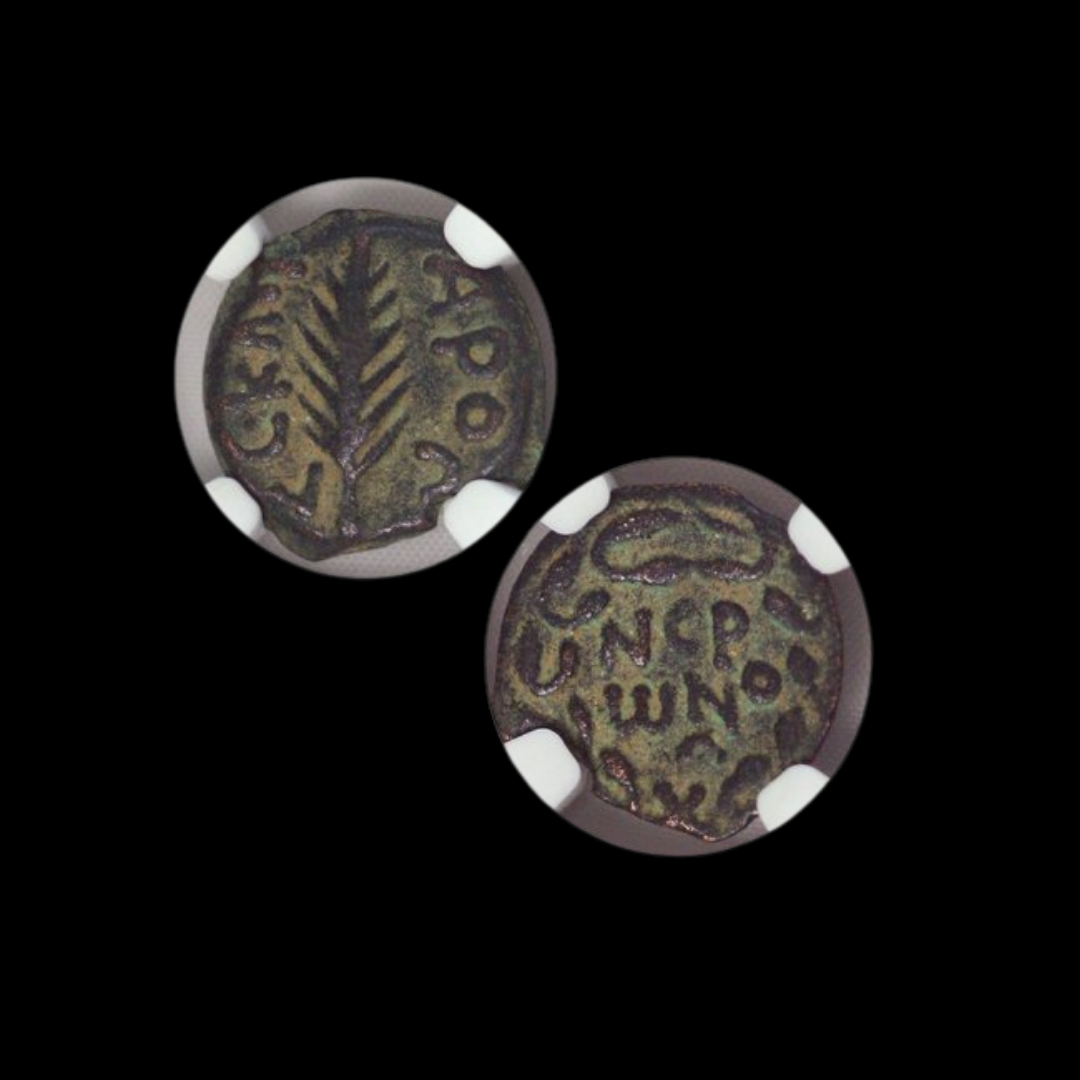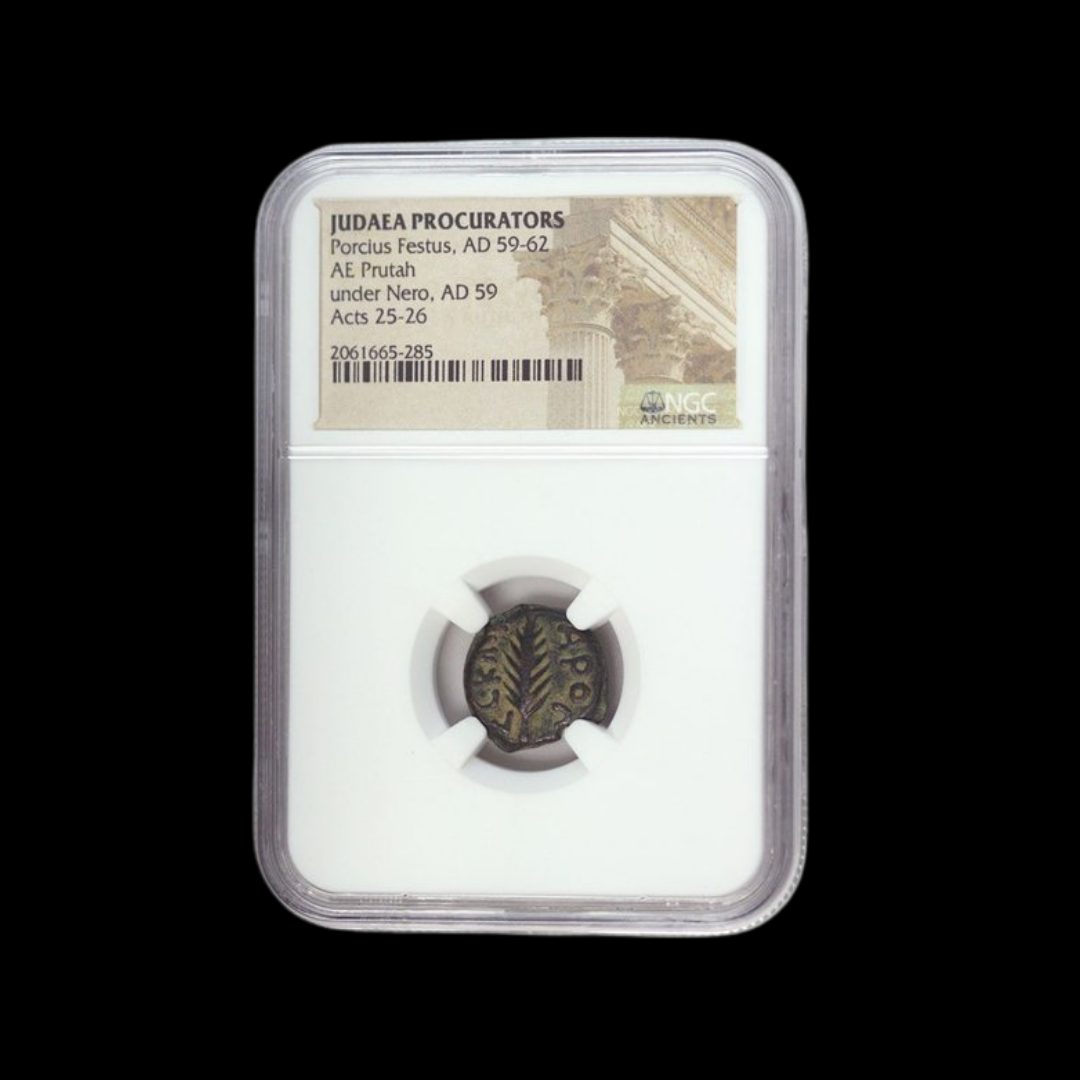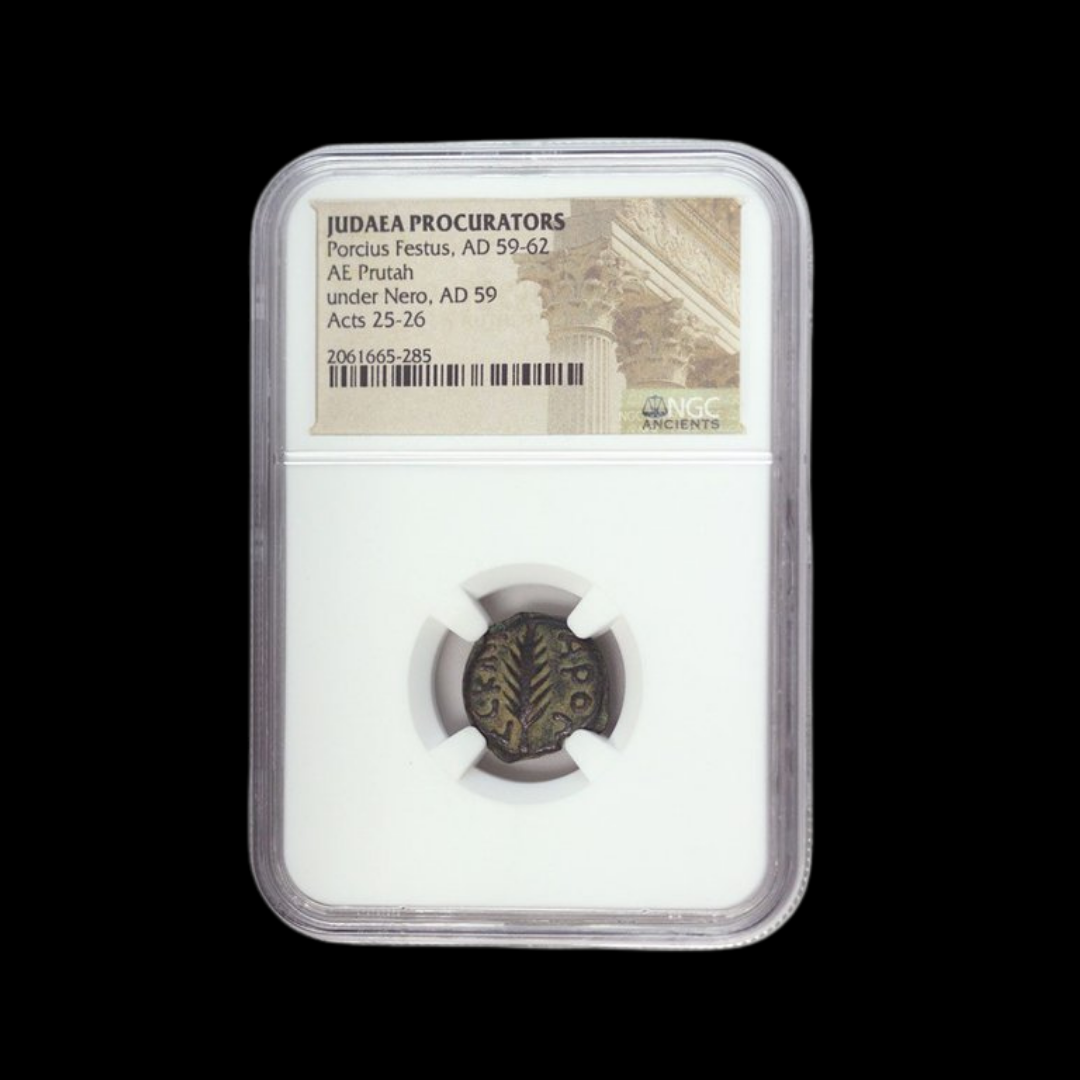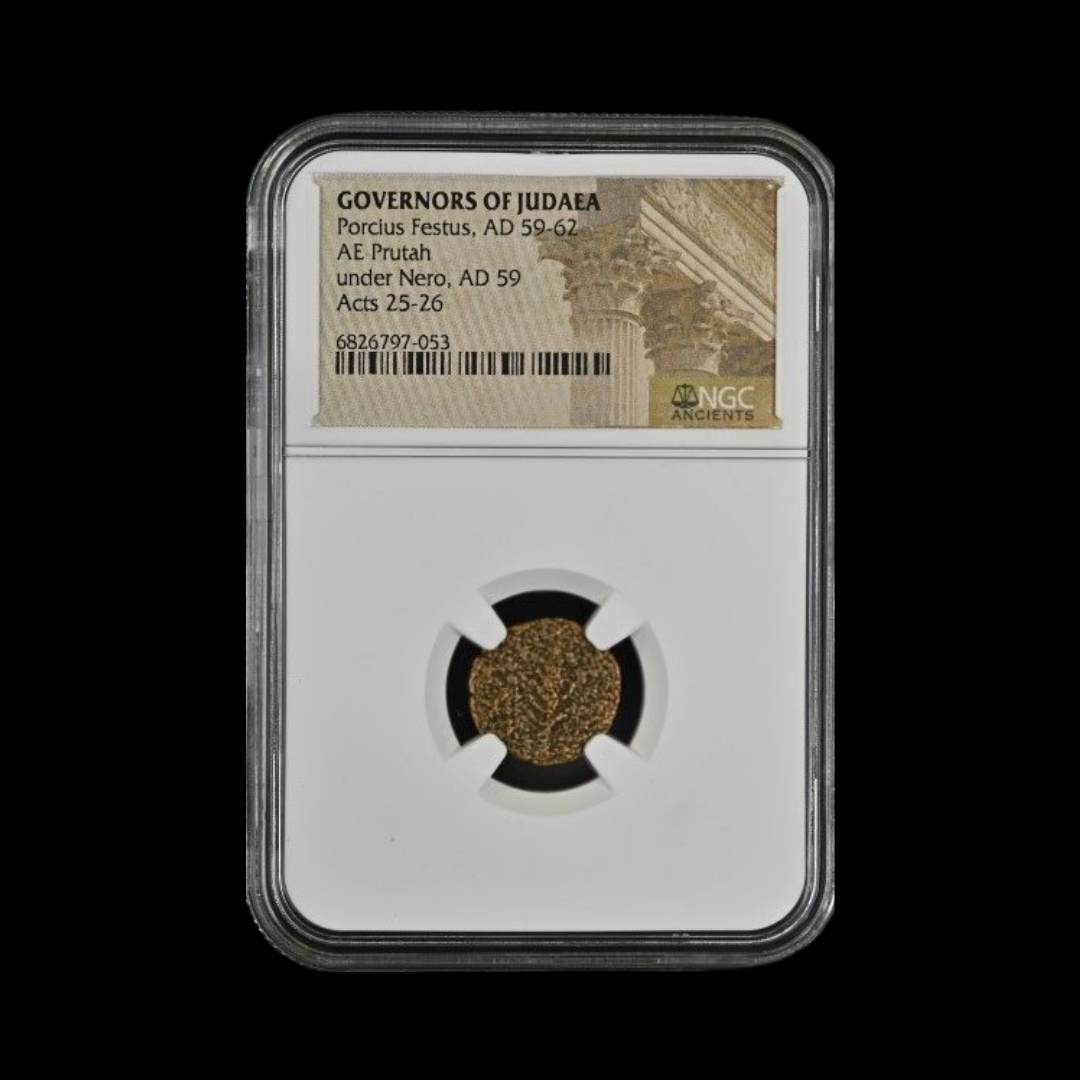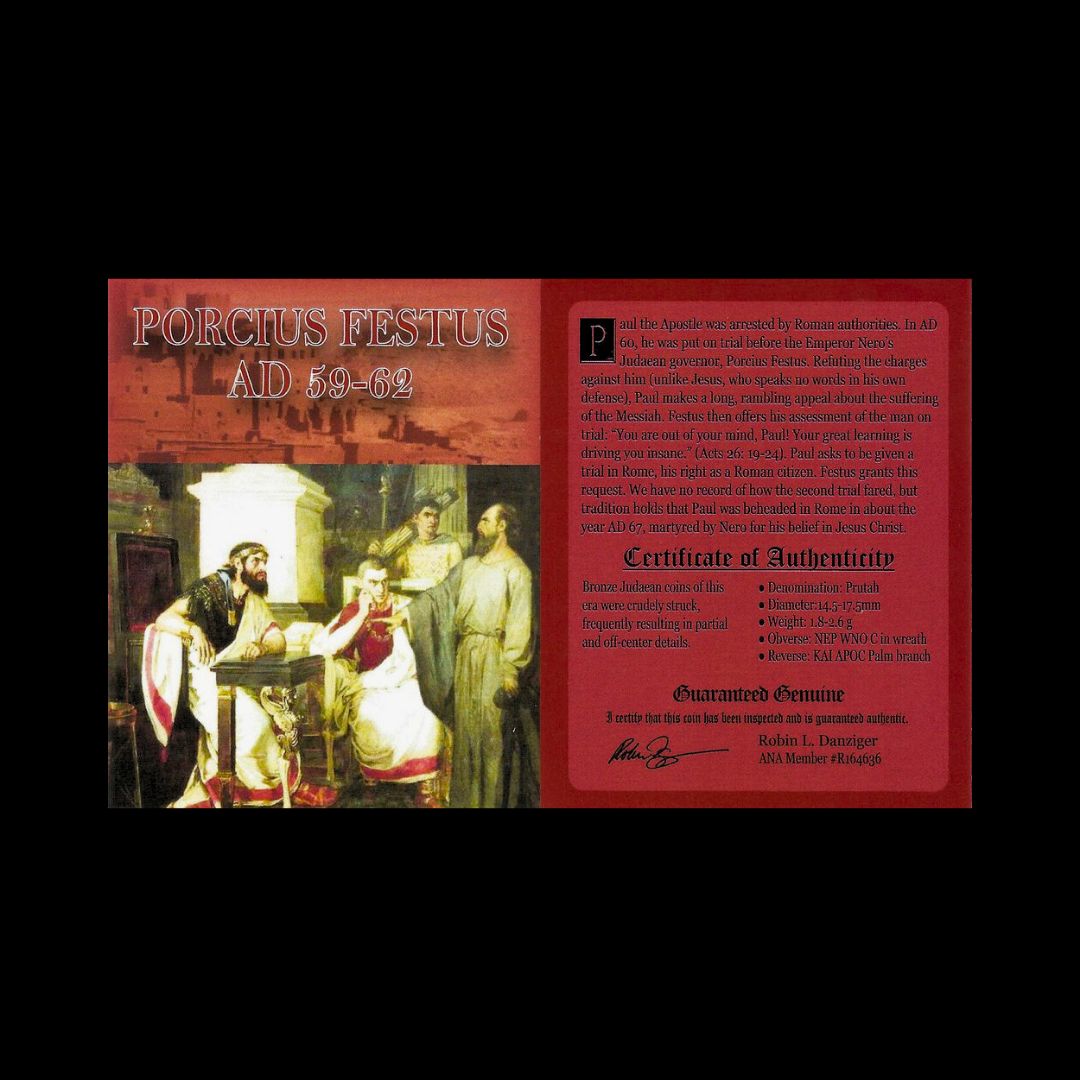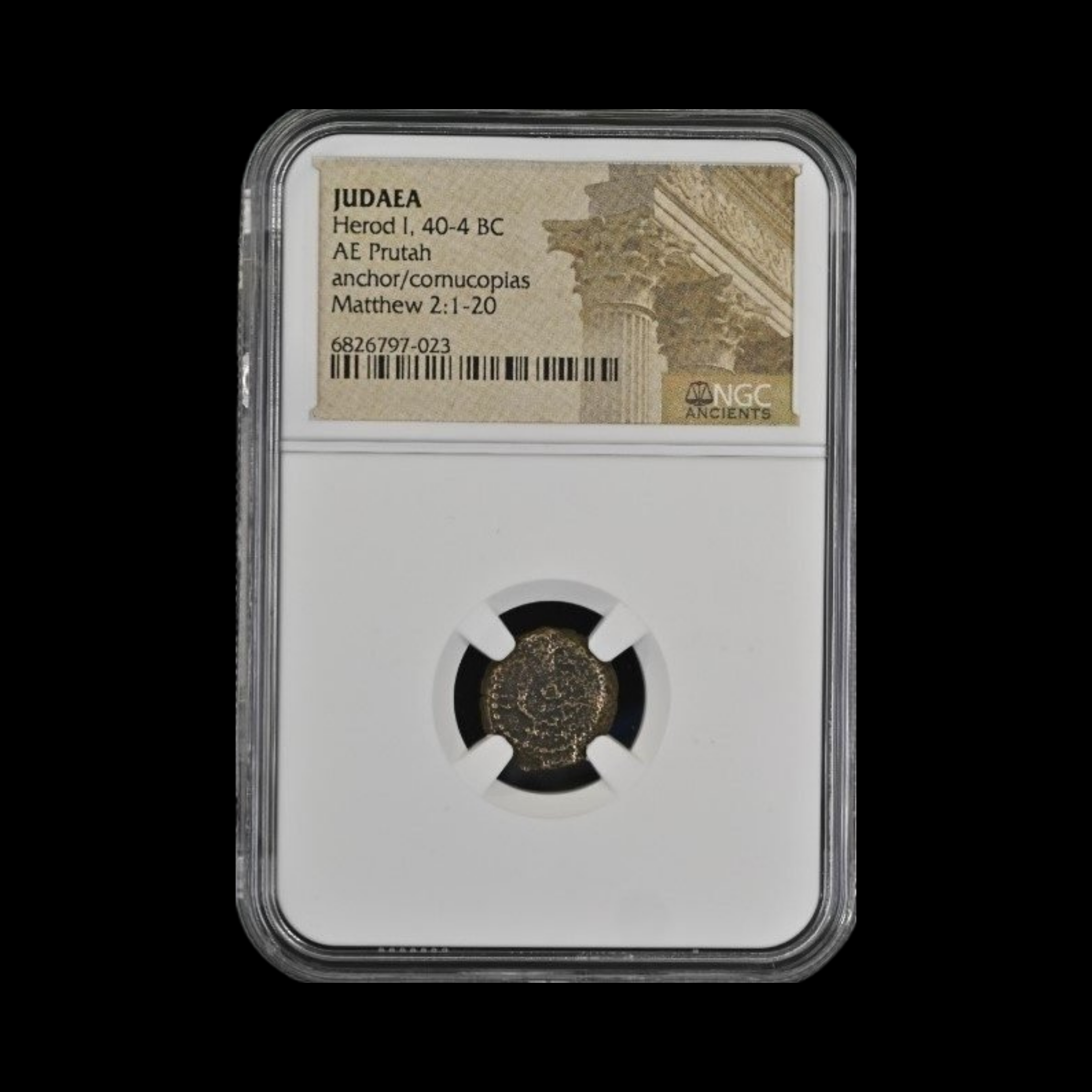 Image 1 of 6
Image 1 of 6

 Image 2 of 6
Image 2 of 6

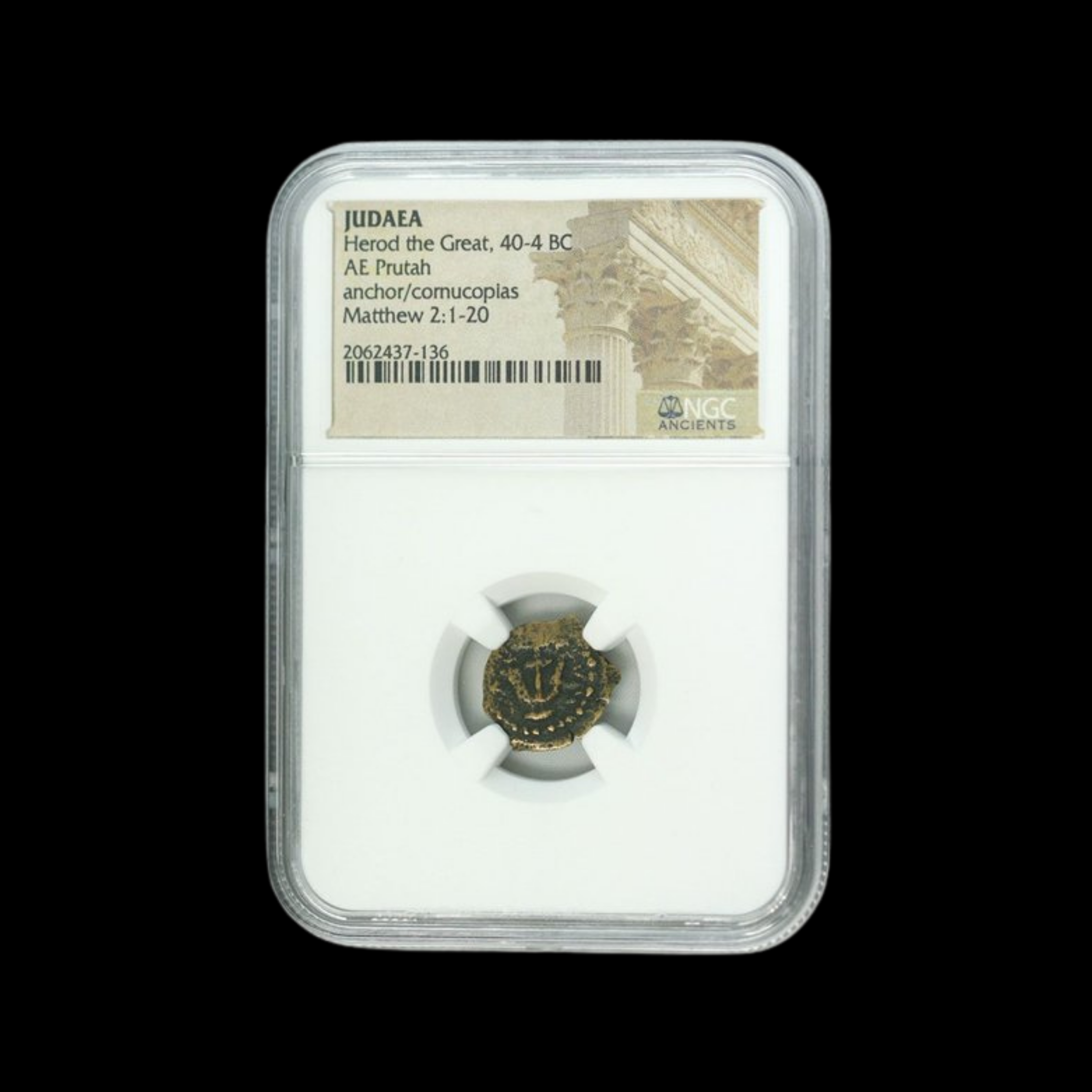 Image 3 of 6
Image 3 of 6

 Image 4 of 6
Image 4 of 6

 Image 5 of 6
Image 5 of 6

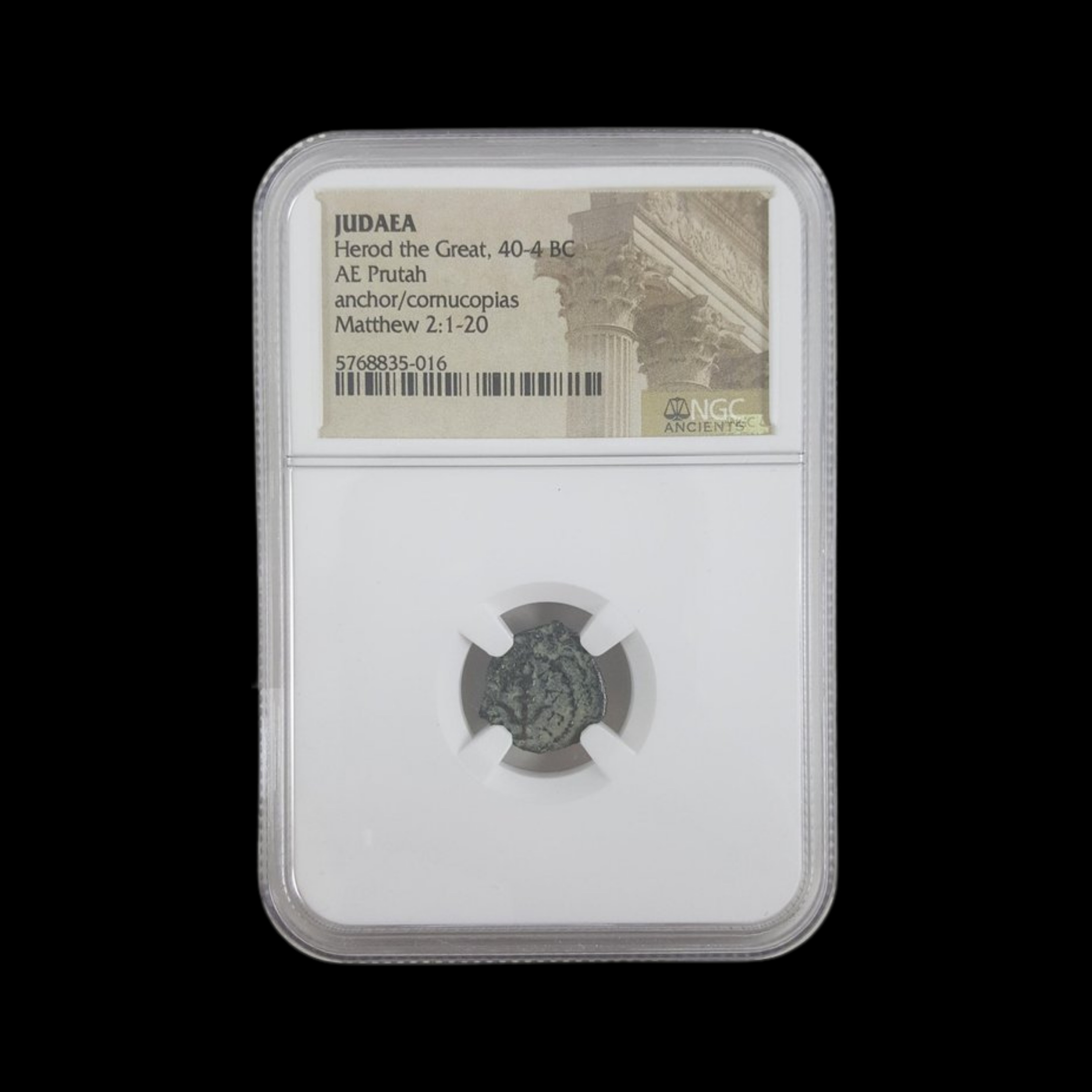 Image 6 of 6
Image 6 of 6







Judaean Bronze Herod I Prutah (about 2060 years ago)
This bronze coin was issued during the reign of Herod I (also known as Herod the Great), who ruled Judaea as a client king under Roman authority from 40-4 BCE. Despite his controversial historical reputation, Herod was responsible for massive building projects and significant economic development in the region.
Coin Description:
Front side: Typically features a tripod with ceremonial bowl or anchor design
Back side: Often displays a double cornucopia (horn of plenty) or military helmet with cheek pieces
Technical Details:
Bronze composition
Prutah denomination (small bronze coin used for everyday transactions)
Reference: Hendin 486-500 (varies by specific type)
NGC certified (specific grade not mentioned)
Date: 40-4 BCE
Condition: Varies by specific example
Historical Significance:
Herod I ruled Judaea (modern Israel/Palestine) after being appointed "King of the Jews" by the Roman Senate. A brilliant but ruthless ruler, he transformed the region through massive building projects including the expansion of the Second Temple in Jerusalem. In Christian tradition, he is infamous for the "Massacre of the Innocents" described in the Gospel of Matthew. His coins reflect Roman influence while maintaining Jewish religious sensitivities by avoiding human or animal imagery prohibited by Jewish law.
This bronze coin was issued during the reign of Herod I (also known as Herod the Great), who ruled Judaea as a client king under Roman authority from 40-4 BCE. Despite his controversial historical reputation, Herod was responsible for massive building projects and significant economic development in the region.
Coin Description:
Front side: Typically features a tripod with ceremonial bowl or anchor design
Back side: Often displays a double cornucopia (horn of plenty) or military helmet with cheek pieces
Technical Details:
Bronze composition
Prutah denomination (small bronze coin used for everyday transactions)
Reference: Hendin 486-500 (varies by specific type)
NGC certified (specific grade not mentioned)
Date: 40-4 BCE
Condition: Varies by specific example
Historical Significance:
Herod I ruled Judaea (modern Israel/Palestine) after being appointed "King of the Jews" by the Roman Senate. A brilliant but ruthless ruler, he transformed the region through massive building projects including the expansion of the Second Temple in Jerusalem. In Christian tradition, he is infamous for the "Massacre of the Innocents" described in the Gospel of Matthew. His coins reflect Roman influence while maintaining Jewish religious sensitivities by avoiding human or animal imagery prohibited by Jewish law.
This bronze coin was issued during the reign of Herod I (also known as Herod the Great), who ruled Judaea as a client king under Roman authority from 40-4 BCE. Despite his controversial historical reputation, Herod was responsible for massive building projects and significant economic development in the region.
Coin Description:
Front side: Typically features a tripod with ceremonial bowl or anchor design
Back side: Often displays a double cornucopia (horn of plenty) or military helmet with cheek pieces
Technical Details:
Bronze composition
Prutah denomination (small bronze coin used for everyday transactions)
Reference: Hendin 486-500 (varies by specific type)
NGC certified (specific grade not mentioned)
Date: 40-4 BCE
Condition: Varies by specific example
Historical Significance:
Herod I ruled Judaea (modern Israel/Palestine) after being appointed "King of the Jews" by the Roman Senate. A brilliant but ruthless ruler, he transformed the region through massive building projects including the expansion of the Second Temple in Jerusalem. In Christian tradition, he is infamous for the "Massacre of the Innocents" described in the Gospel of Matthew. His coins reflect Roman influence while maintaining Jewish religious sensitivities by avoiding human or animal imagery prohibited by Jewish law.
Herod I[2][a] or Herod the Great (c. 72 – c. 4 BCE) was a Roman Jewish client king of the Herodian kingdom of Judea.[3][4][5] He is known for his colossal building projects throughout Judea. Among these works are the rebuilding of the Second Temple in Jerusalem and the expansion of its base[6][7][8]—the Western Wall being part of it. Vital details of his life are recorded in the works of the 1st century CE Roman–Jewish historian Josephus.[9]
Despite Herod's successes, including single-handedly forging a new aristocracy from practically nothing,[10] he has been criticized by various historians. His reign polarizes opinion among historians, some viewing his legacy as evidence of success, and some viewing it as a reminder of his tyrannical rule.[9]








